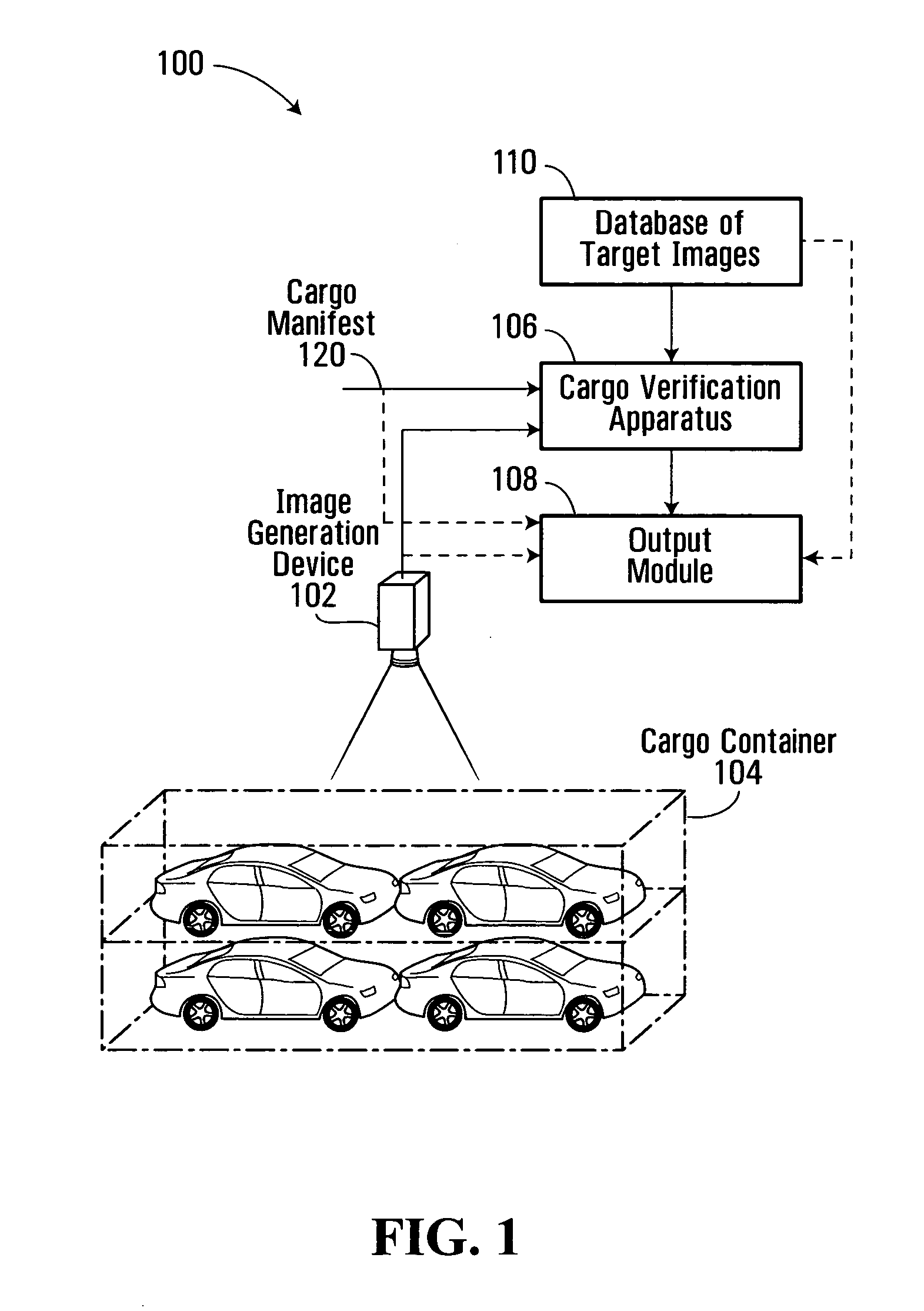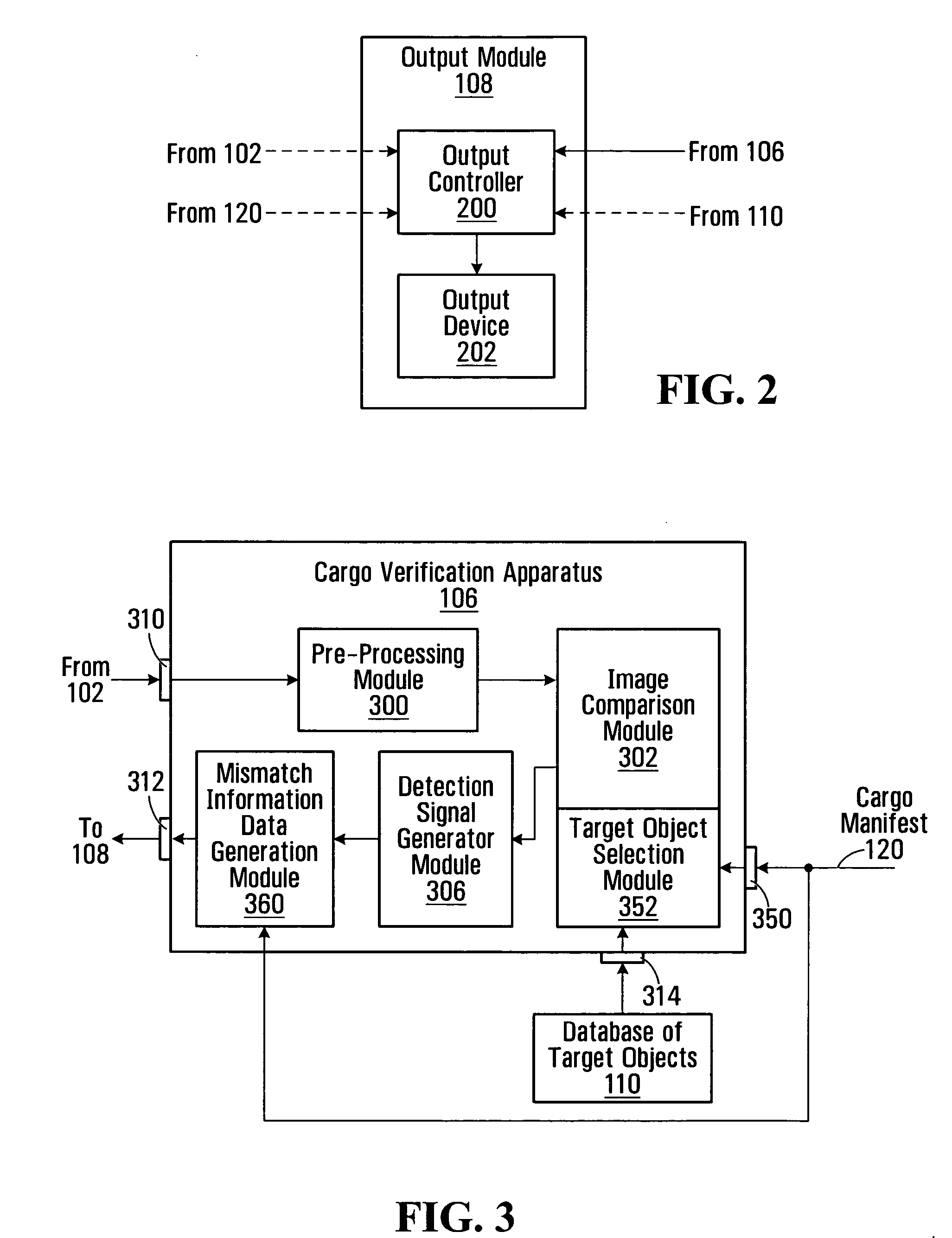Method and system for screening cargo containers
a technology for cargo containers and screening methods, applied in the field of container contents verification, can solve problems such as the possibility of cargo theft, theft of one or more items, and manifest fraud, and achieve the effect of reducing the number of target images
- Summary
- Abstract
- Description
- Claims
- Application Information
AI Technical Summary
Benefits of technology
Problems solved by technology
Method used
Image
Examples
Embodiment Construction
[0046] Shown in FIG. 1 is a system 100 for screening a cargo container in accordance with a specific example of implementation of the present invention. The system 100 includes an image generation device 102, an apparatus 106 in communication with the image generation device 102 and an output module 108.
[0047] The image generation device 102 generates an image signal associated with a cargo container 104. The image signal conveys information related to the contents of the cargo container 104. The apparatus 106 receives the image signal associated with the cargo container 104. The apparatus 106 also received at input 120 a list of objects conveying objects expected to be present in the cargo container.
[0048] The apparatus 106 processes the image signal associated with the cargo container in combination with the list of objects and a group of target images associated with objects to derive mismatch information data. The mismatch information data conveys distinctions, if any, between...
PUM
| Property | Measurement | Unit |
|---|---|---|
| time | aaaaa | aaaaa |
| processing | aaaaa | aaaaa |
| computed tomography | aaaaa | aaaaa |
Abstract
Description
Claims
Application Information
 Login to View More
Login to View More - R&D
- Intellectual Property
- Life Sciences
- Materials
- Tech Scout
- Unparalleled Data Quality
- Higher Quality Content
- 60% Fewer Hallucinations
Browse by: Latest US Patents, China's latest patents, Technical Efficacy Thesaurus, Application Domain, Technology Topic, Popular Technical Reports.
© 2025 PatSnap. All rights reserved.Legal|Privacy policy|Modern Slavery Act Transparency Statement|Sitemap|About US| Contact US: help@patsnap.com



